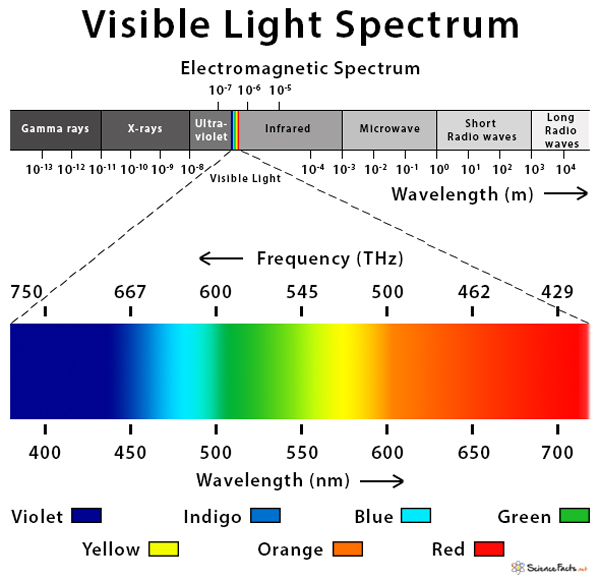Facts and Characteristics of Visible Light
Consists of seven colors – violet, indigo, blue, green, yellow, orange, and red. Collectively known as VIBGYOR.Speed is constant, i.e., 3 X 108 m/s in the airSpeed reduces to 2.25 X 108 m/s in water and 2 X 108 m/s in glassIt can be measured by the unit of the lumen, which is the total quantity of visible light emitted by a source per unit of time. Another unit is candela, which gives the wavelength-weighted power or luminous intensity.Visible light usually is not dangerous or harmful. However, if the light is intense, then it can damage the receptor cells in the eye, causing temporary or permanent blindness.
Examples of Visible Light
SunlightThe light emitted by some lasersIncandescent light bulbs, torchlight, flashlight, headlamps, fluorescent and neon lightsThe red, amber, and green traffic lights
For performing scientific experiments by scientists, researchers, technicians, and studentsLasers emitting visible light are used in laser pointers, laser surgery, and cutting of metalsLight-emitting diodes (LED) display visible lights and are used in many electronic devicesAstronomers use visible light emitted by distant objects like planets and moons to study their properties and featuresAlso, sunlight, the primary source of visible light on the earth, has many benefits. These include a) Source of vitamin D, b) Kills bacteria, c) Builds the immune system, and d) Photosynthesis by plants.

